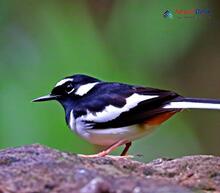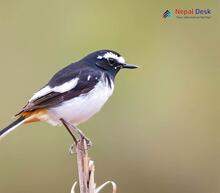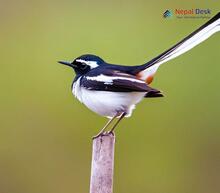Hidden amidst the breathtaking landscapes of Nepal, you'll find a diverse array of bird species that captivate enthusiasts and amateurs alike. Among these winged wonders, the Enicurus genus holds a special place in the hearts of many. These enchanting birds, known for their striking appearances and mesmerizing behaviors, truly embody the rich biodiversity thriving in this captivating region.
Discovering the Enicurus Genus
The Enicurus genus comprises about six to seven species commonly known as forktails due to their distinctive and deeply forked tails. These medium-sized birds belonging to the Muscicapidae family boast an impressive variety of colors and patterns ranging from black, white, and gray, to chestnut. The most commonly found species in Nepal include the Black-backed Forktail (Enicurus immaculatus), White-crowned Forktail (Enicurus leschenaulti), and Spotted Forktail (Enicурс maculatus).
Dwelling in Diverse Habitats
Enicurus birds can be spotted in various habitats across Nepal, though they're particularly drawn to fast-flowing streams and rivers. These birds are highly adapted to navigating rocky terrains along water bodies, using their powerful legs to hop between stones with agility. The lush vegetation encompassing these aquatic environments provides ample opportunities for them to seek shelter or find nourishment.
Feeding and Foraging Habits
Forktails primarily feed on insects sourced from their preferred habitat – close to clean water bodies. Using their sharp beaks with great precision, they feast on aquatic insects such as mayflies, stoneflies, caddisflies, as well as terrestrial insects including beetles and ants. Their propensity for nourishing environments plays an essential role in maintaining a healthy ecosystem by controlling insect populations.
Breeding Behaviors Worth Witnessing
The breeding season of Enicurus typically lasts from April to July, during which these birds engage in elaborate displays that are nothing short of mesmerizing. Males perform intricate aerial movements and sing melodic songs to attract their female counterparts. Once a mating pair is formed, they work together to build a dome-shaped nest using grass, leaves, and moss — usually built close to streams or water sources, providing a safe and nurturing environment for their offspring.
Conservation Concerns and Efforts
As with many other bird species around the globe, habitat loss poses a threat to Enicurus populations. Deforestation and water pollution can reduce breeding grounds, food sources, and viable nesting locations — ultimately impacting population numbers. Conservation efforts must prioritize protecting Nepal's rich natural ecosystems as well as raising awareness for these magnificent birds.
Final Thoughts
The Enicurus genus is not only a resplendent exhibit of nature's beauty but also serves as a vital component for preserving the ecological balance in Nepal. To treasure these charming creatures, we must remain committed to preserving their habitats and urging for substantial conservation measures. So the next time you visit Nepal, keep an eye out for these graceful birds gliding along the riverbanks – they're truly a sight to behold.




